#murdo macleod
Photo

Scottish Highlands
Wild salmon jumping in the River Alladale
Photograph: Murdo MacLeod/The Guardian
735 notes
·
View notes
Text





Amy Winehouse by Murdo Macleod, 2004
3 notes
·
View notes
Photo

Daft Punk by Murdo Macleod for the Guardian, 2013
125 notes
·
View notes
Photo


The 16th of February 1746 in what became known as the Rout of Moy, Government forces under Lord Louden attempt to capture Prince Charles Edward Stewart at Moy Hall.
Around midnight on 16th/17th February 1746, Lord Loudon, the Commander of the Hanoverian forces in the north, mustered 1500 troops from the Inverness Garrison and set off on the twelve mile march south along General Wade’s Road to Moy in a bid to capture Prince Charles Edward Stuart. The prince, a guest of Lady Anne Mackintosh (Colonel Anne) at Moy Hall, had arrived with a small guard of 50 men, some distance ahead of his retreating Highland Army.
Pitch darkness interspersed with flashing lightning slowed and unsettled the marching men.
Watching the road here, 3 miles from Moy Hall, was an ‘outer guard’ of just five Jacobites led by Donald Fraser, the Moy Blacksmith. He had chosen a spot where he could observe movement on the skyline to the north in darkness, and where he had cover to the south in daylight. Nearby to the east, peat stacks remained out on the moor. Here he planned to harass, and perhaps deceive, the enemy.
As the Hanoverian Column, spearheaded by the Laird of MacLeod and his men approached in the darkness, they were surprised by sudden musket fire and loud war cries urging clansmen to battle. Even the peat stacks threatened in the flashing lightning. Convinced that the whole Highland Army was at hand, Loudon’s men turned in panic and fled back to Inverness, somehow carrying off the body of Donald Ban MacCrimmon, Piper to MacLead and the only fatality of the night. A premonition of his imminent death had been realised.
This skirmish took place two months prior to the Battle of Culloden. Donald Fraser died in 1804 and lies buried in Moy Churchyard.
The above information is displayed at the Cairn.
On the cold, dull but dry afternoon of Saturday l6th April, a sizeable crowd of over 200 people attended the unveiling of a new cairn making the site of the skirmish known as “The Rout of Moy”.
This event was organised mainly by Donald MacAskill of Tomatin, James Ingram of Aberdeen, and James and Elma Singer of Ellon, with valuable assistance from Brian Duff of Forest Enterprise. Building work was carried out by Murdo MacAskill, Fred Jamison and Willie MacAskill, all of Inverness.
The unveiling ceremony was preceded by a stirring demonstration of drumming skills by the Clann an Drumma (4 drummers and a piper) from Glasgow.
During the ceremony wreaths were laid in memory of Donald Ban MacCrimmon, and a one minute silence was observed.
After the ceremony Donald MacAskill thanked the following people for their participation:-
HRH Prince Michael of Albany for unveiling the cairn.
Dr Seamus H Grant of Rothiernurchus for his address in Gaelic.
Hector MacKenzie of Skye for his prayers.
Judith Dyson of Kingussie for playing the lament.
Kenneth Borthwick of Dundee for the musket salute.
Afterwards an appreciative large crowd enjoyed the hospitality of the Coleman family at the Tomatin Inn who provided welcoming plates of soup and stovies. Music was provided by Clann an Drumma, Judith Dyson, James Home, Fred Jamison and Andy Shaw. It was a most enjoyable day which will long be remembered by those present.
18 notes
·
View notes
Text

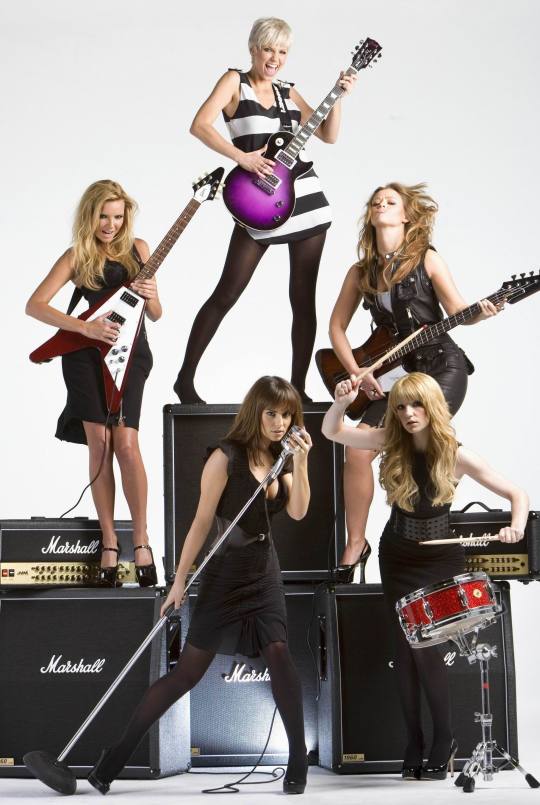


Murdo Macleod, 2007
17 notes
·
View notes
Text
“A Little Life” is ending.
That’s the question that has dominated this summer, after you watch Alcaraz beat Djokovic (a surprising number one) Luke Thompson as Willem and James Norton as Jude in ”A Little Life.” A non stop audiences walking to the West End’s hottest ticket 🎟️ it runs until August 5.

Hanya Yanagihara’s book, as conceived for the stage by Ivo van Hove and starring a lot of James Norton. The first is the emotionally hardcore, for whom nearly four hours of self-cutting and rape scenes is a feat to be endured. James Norton’s a star

Nathalie Armin as the social worker Ana and James Norton as Jude, the lawyer at the heart of Hanya Yanagihara’s novel. Photograph: Jan Versweyveld

Zubin Varla (as Harold) and Elliot Cowan (as Brother Luke) with Norton and Armin. The book is an exploration of trauma, survival and love as Jude suffers the lifelong impact of child abuse. Photograph: Jan Versweyveld
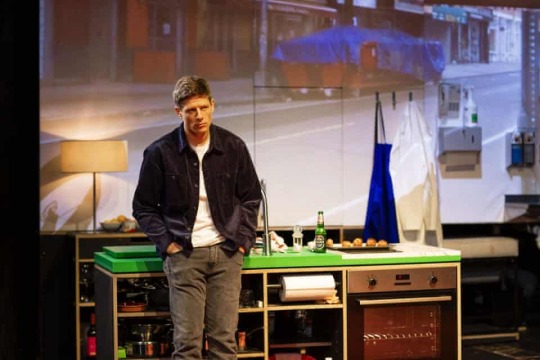
The book has been adapted by Yanagihara with director Ivo van Hove and Koen Tachelet. Photograph: Jan Versweyveld

Zach Wyatt (Malcolm) and Luke Thompson (Willem) with Norton. The show has a set and lighting design by Jan Versweyveld and costume design by An D’Huys. Photograph: Jan Versweyveld

Luke Thompson (Willem), James Norton (Jude), Zubin Varla (Harold), Emilio Doorgasingh (Andy), Zach Wyatt (Malcolm) and Omari Douglas (JB). Photograph: Jan Versweyveld
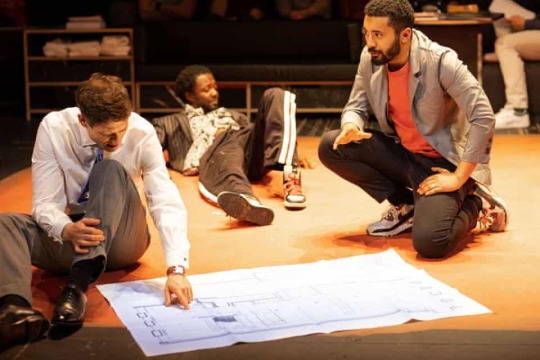
The production has an epic running time (3 hours, 40 minutes) to match the length of the novel. Photograph: Jan Versweyveld

This is the first English-language production of the novel. Photograph: Jan Versweyveld

At last year’s Edinburgh international festival, van Hove directed a version of the play in Dutch with his International Theater Amsterdam ensemble. The cast included Ramsey Nasr and Steven van Watermeulen. Photograph: Murdo MacLeod/The Guardian

#ALittleLife #WestEnd #JamesNorton #Jude #LukeThompson #Willem #theatre #London #HanyaYanagihara #IvovanHove
2 notes
·
View notes
Text
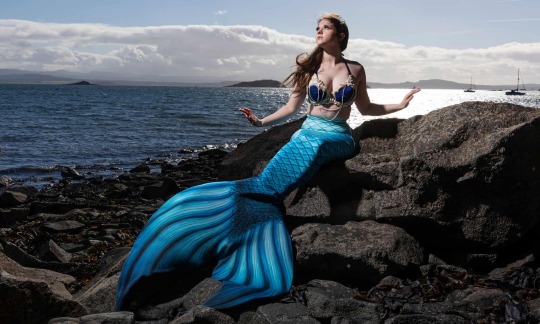
Ashleigh More, Scotland’s Moray Firth Mermaid. Photograph: Murdo MacLeod
3 notes
·
View notes
Text
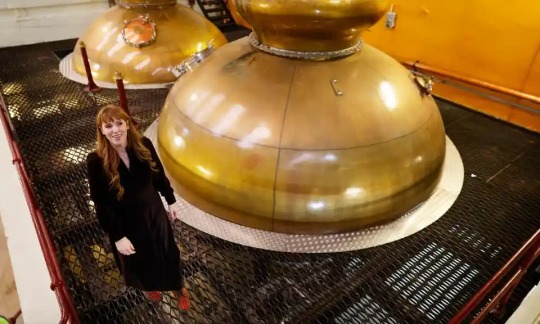
You think you know Scotland. You don’t, and I’m genuinely not convinced wearing tartan on your first political visit is the finest idea. Pencaitland, Scotland. Labour deputy leader Angela Rayner wears tartan boots on her visit to Diageo’s Glenkinchie Distillery to learn more about the importance of the industry and to talk about Labour’s New Deal for Working People Photograph: Murdo MacLeod/The Guardian #outayeorda
1 note
·
View note
Text

Photograph: Murdo MacLeod/The Guardian - Scottish Highlands
1 note
·
View note
Text
Love you forever wee da- Murdo MacLeod’s daughter shares emotional video | videocelts.com
Marina MacLeod has posted a video charting her Dad Murdo’s battle with illness over the last year.
— Read on videocelts.com/2023/09/blogs/latest-news/love-you-forever-wee-da-murdo-macleods-daughter-shares-emotional-video/
View On WordPress
0 notes
Text

The Scottish Crannog Centre’s replica roundhouse, which burned down in 2021, is to be replaced with a new one on the opposite side of Loch Tay Photograph: Murdo MacLeod/The Guardian
Scotland 🏴: Iron Age Roundhouse Rises From The Ashes on Shores of Scottish Loch
Volunteers are helping to build a replica crannog on Loch Tay after an earlier model burned down two years ago
— Libby Brooks Scotland Correspondent | Thursday 18 May 2023
On the shores of Loch Tay, slices of dark turf are piled high alongside bundles of pale reeds. Over the month of May, local volunteers will turn these raw materials into a replica iron age roundhouse, in what will mark a rising from the ashes for one of Scotland’s best-loved living history museums.
In June 2021, the Scottish Crannog Centre suffered a devastating blow when its replica roundhouse burned down in just six minutes. The cause of the blaze has not been ascertained, though police have ruled out anything suspicious.
An outpouring of support followed, both locally and nationally, with £50,000 donated within a fortnight, a testament to the appeal of this unique open-air museum, which offers visitors the chance to take part in iron age crafts, such as weaving and pottery, as well as continuing the serious archaeological work of local crannog excavation.
Now, with a grant of £2.3m from the Scottish government, the centre is rebuilding on a new site directly across the loch, on land transferred from the forestry commission.
Crannogs, which were common across Scotland and Ireland, are houses built on stilts over water, usually with a bridge connecting them to the shore. The first crannogs in Scotland were built on lochs and firths in the early iron age, about 2,500 years ago.

The remains of the crannog after it was destroyed by a fire. Photograph: Murdo MacLeod/The Guardian
Looking out across the water from the new site at Dalerb, assistant director Rachel Backshall picks out four submerged crannogs visible from this vantage point. “They existed in different forms up to the 17th century, and there are 17 on Loch Tay alone,” she says. “We are surrounded by the archaeology we’re talking about.”
The museum celebrates crannogs not only for the skills and technologies required to build and maintain them but also for the way they hold information about the past: as underwater sites, they often reveal unprecedented levels of preservation, providing a rare glimpse of prehistoric life.
The plan is now is for volunteers to finish building a land-based roundhouse over the summer and for construction of a new crannog, over water, to begin in the winter.
As with the original museum, which remains open, the new site will include a replica iron age village with demonstration shelters for cookery, metalworking, weaving and woodcraft, as well as eco-friendly modular buildings for a new cafe, museum and shop.
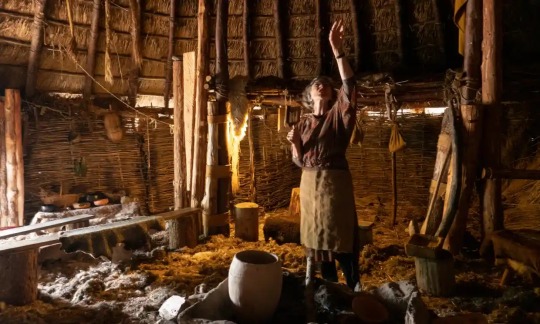
Inside the crannog before it was destroyed. Photograph: Murdo MacLeod/The Guardian
The centre is aiming for its new incarnation to become Scotland’s most sustainable museum, in terms not just of carbon count, but of craft, skills and sustainability of materials.
“Everything we’re doing now is directly inspired by what people did 2,500 years ago,” says Rich Hiden, another assistant director. “It might seem that we’re doing something cutting edge to be super sustainable but the practice and skills are all bedded in what the crannog people did. They were living in a way we can learn from today.”
Sustainability and access may be familiar heritage sector buzzwords, but a visit to the centre underlines how creatively embedded this museum is in its wider community.
Refugee integration groups, members of Perthshire Women’s Aid and local schools will be visiting to assist with the community build. “People are building themselves into a shared heritage,” says Backshall.
The centre also offers one-to-one mentoring for young people struggling with mainstream education, and welcomes a wide range of volunteers for its diverse audience. Archaeology graduate Rebecca Davies, 50, made the 12-hour drive from her home in north Wiltshire to help out after reading about the fire. She is now starting her first paid job as a heritage interpreter over the summer season. She explains that she was 35 when she was diagnosed with autism: “Museums can help because they are full of quirky people anyway.”
In the museum, curator Amy Stewart is sorting through boxes of unsourced pottery fragments from a nearby crannog site. “The contents of the museum have been really under-studied so we love to have students with a particular interest coming in,” she says.
She lays out a few fragments where the fingerprints of the iron age folk who sculpted them are still visible. Because skin oils do not affect even ancient pottery such as this, visitors are encouraged to place their contemporary fingers in the prehistoric prints.
��It’s a very different way of thinking about leaving your mark on history. Everyone can make their mark, not just kings and queens.”
0 notes
Photo

A young wallaby joey on Inchconnachan island, Loch Lomond, one of the few habitats for the macropod outside Australia.
Photograph: Murdo MacLeod/The Guardian
#murdo macleod#photographer#the guardian#wallabey#joey#inchconnachan island#loch lomond#macropod#australia#nature#animal#mammal#wildlife
53 notes
·
View notes
Photo
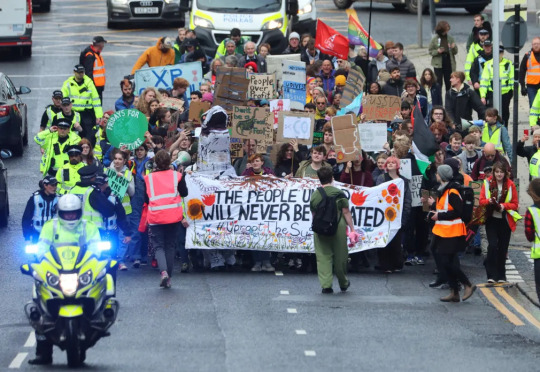
Glasgow, UK
A Fridays For Future (FFF) protest on the anniversary of Cop26. Protesters marched from Kelvin Way to George Square following the same route as their demonstration last year during the climate talks. The organisers want to highlight the ‘failures of the summit’, as well as the UK government’s ‘greenwashing’ and the links between the climate crisis and the cost of living crisis.
Photography by Murdo MacLeod
1 note
·
View note
Text
Sandman next week! The only American comics I've read
Drew this while throwing tantrums at work
Reference photo: Murdo Macleod, The Guardian

1 note
·
View note
Text
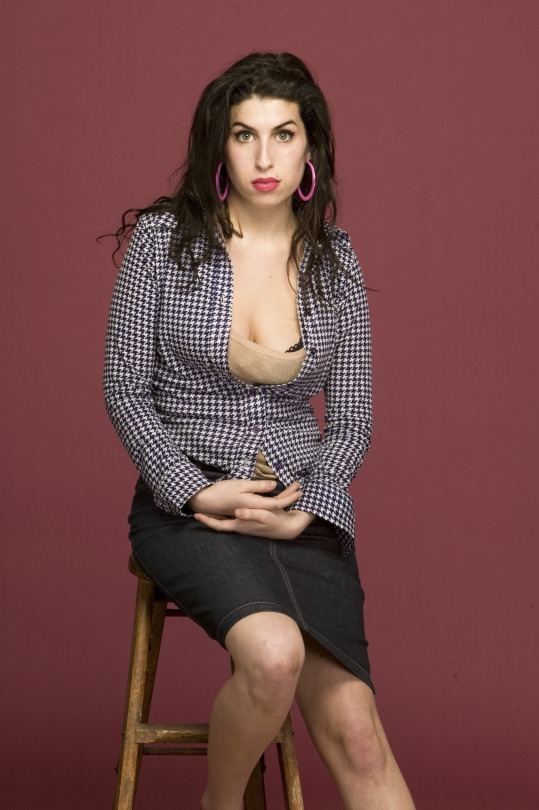




Amy Winehouse circa 2004, photographed by © Murdo Macleod.
123 notes
·
View notes
Text
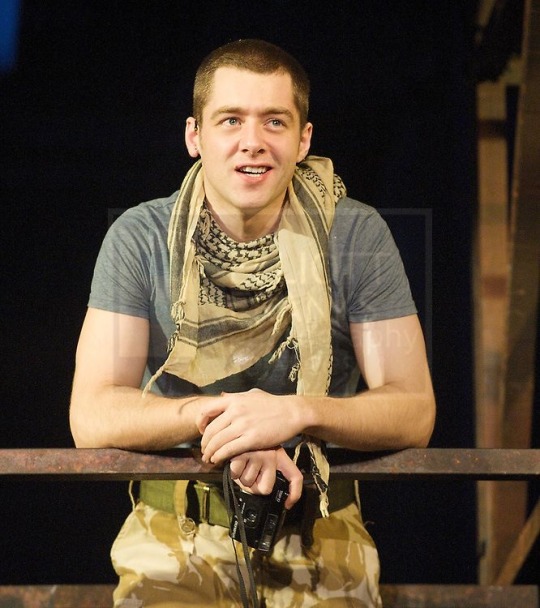
Gregory Burke To Adapt Ian Rankin’s Rebus Series as Eleventh Hour Drama Black Watch. Both adaptations, it has Richard Rankin’s participation.
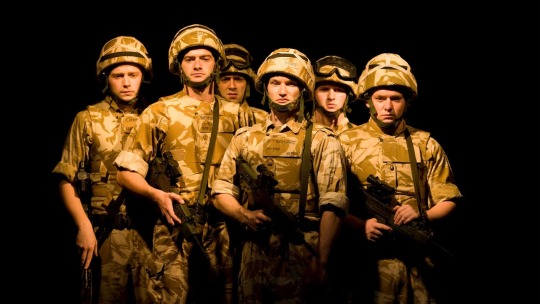
Gregory Burke's play Black Watch was one of the first successes for the nascent National Theatre of Scotland, first appearing at the Edinburgh festival in 2006 and going on to a massively successful worldwide tour. Its plot focuses on the famous regiment as it goes into battle in Iraq - and the consequences for it as the government amalgamates it with others to become a battalion in a new Scottish regiment.

Scottish soldiers with the red feathers are members of Scotland's elite fighting force, the Black Watch, into action against Iraqi insurgents during a production of the National Theatre of Scotland's production of Black Watch, presented by Gregory Burke's portrait of an elite Scottish regiment serving in Iraq.

These Black Watch soldiers are realistic, too, portrayed by Jack Lowden (Cammy), Richard Rankin (Granty), Adam McNamara (Rossco), Chris Starkie (Stewarty), Cameron Barnes (Macca), Gavin Jon Wright (Nabsy), Scott Fletcher (Kenzie), and Andrew Fraser (Fraz). Stephen McCole plays the Officer, and Robert Jack doubles as the Writer and the Sergeant.
The men are fighting for their regiment, company, platoon, section, and, ultimately, their mates. And the camaraderie is caught in a final image of Cammy (Jack Lowden)
youtube
Memories of the actual regiment's action in the Middle East are still fresh.

A Black Watch captain leads a foot patrol into Zubayr, south of Basra, southern Iraq, in 2003 Photograph: Murdo Macleod.
The Black Watch is an ancient regiment, as the drum at its museum in Perth shows. Campaign and battle honours date from 1759, and include the Napoleonic, first and second world wars.

Photograph: Captain Angus Beaton/AP
#BlackWatch #GregoryBurke #ScottishRegiment #NationalTheatreofScotland
2 notes
·
View notes